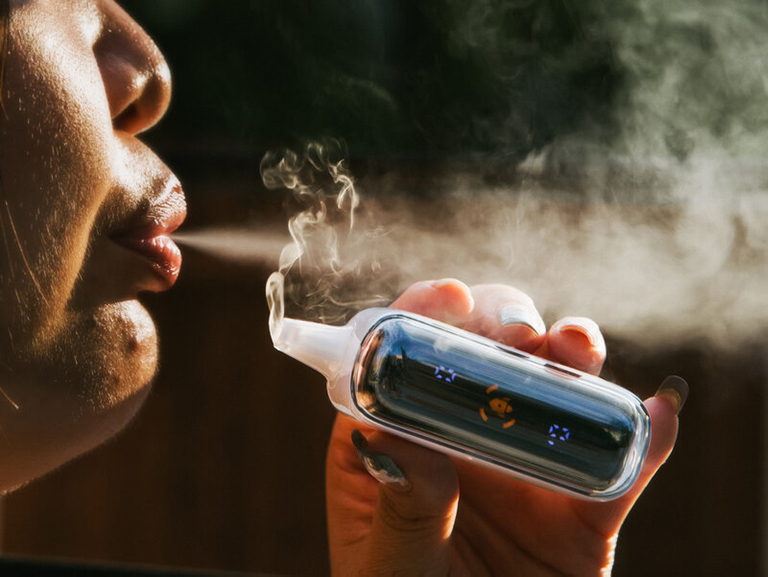Guide
How to Quit Vaping? A Guide for Smokers in Australia
Vaping has become a common alternative for smokers trying to cut down on cigarettes, but what happens when you want to quit vaping too? If you’re a smoker or ex-smoker in Australia looking for practical ways to stop vaping, you’re in the right place.

Quitting vaping can be challenging, especially if you’ve used it as a smoking cessation tool. However, with the right approach, support, and mindset, you can successfully break free from the habit.
This guide will walk you through everything you need to know about how to quit vaping, tailored specifically for smokers in Australia.
Why Quit Vaping?
Before diving into strategies, it’s important to understand why quitting vaping is beneficial. Even though vaping is often seen as less harmful than smoking, it still carries risks, including:
- Nicotine addiction: Many vapes contain high levels of nicotine, making them just as addictive as cigarettes.
- Health concerns: While vaping is considered less harmful than smoking, long-term effects remain uncertain.
- Financial costs: Disposable vapes and e-liquids can become an expensive habit over time.
- Government regulations: Australia has strict laws on nicotine vapes, making them harder to access legally.
If you’ve been vaping as a replacement for smoking, it might be time to take the next step toward quitting altogether.
Step 1: Identify Your Reasons for Quitting
The first step to quitting vaping is understanding why you want to stop. Your reasons will serve as motivation during difficult moments. Some common reasons include:
- Wanting to break free from nicotine addiction.
- Improving lung health and overall well-being.
- Saving money by eliminating vape purchases.
- Avoiding legal restrictions on nicotine vape products in Australia.
- Setting a good example for friends, family, or children.
Write down your reasons and remind yourself of them regularly to stay focused on your goal.
Step 2: Reduce Your Nicotine Intake Gradually
If you’re using a nicotine-based vape, quitting cold turkey can be tough. Gradually reducing your nicotine intake can help minimize withdrawal symptoms and make quitting more manageable.
Here’s how you can taper off nicotine in a structured way:
- Switch to a lower nicotine strength: If you’re using a high-nicotine vape, consider moving to a lower concentration. For example, if you’re on a 50mg nicotine vape, step down to 25mg, then 12mg, and so on.
- Use a mix of nicotine and nicotine-free vapes: Alternate between using your regular vape and a nicotine-free version to slowly break the habit.
- Increase the time between puffs: Instead of vaping constantly, set a timer to space out each session until you gradually stop completely.
Step 3: Set a Quit Date
Having a clear quit date can help keep you accountable and give you a specific goal to work towards. Choose a date within the next two to four weeks and gradually prepare yourself leading up to it.
- Mark it on your calendar.
- Tell your friends and family about your plan.
- Start reducing nicotine levels beforehand.
- Plan how you’ll handle cravings and triggers.
Step 4: Identify and Avoid Triggers
Triggers are situations, emotions, or activities that make you want to vape. Common vaping triggers for ex-smokers include:
- Stress or anxiety.
- Drinking coffee or alcohol.
- Social situations where others are vaping.
- Boredom or routine habits, like vaping while driving.
To successfully quit, you need to identify your personal triggers and create alternative ways to manage them.
For example:
- If stress is a trigger, try deep breathing exercises or meditation.
- If you associate vaping with drinking coffee, switch to tea or another beverage.
- If social settings tempt you, prepare in advance by bringing gum or a stress ball.
Step 5: Find Healthy Substitutes
One of the biggest challenges when quitting vaping is finding something to replace the habit. Many people feel the need to have something in their hands or mouth as a substitute.
Try these alternatives:
- Sugar-free gum or mints.
- Herbal tea to replace the habit of inhaling vapor.
- A straw or toothpick to keep your mouth occupied.
- Stress balls or fidget toys to keep your hands busy.
By replacing vaping with healthier alternatives, you’ll make the transition easier.
Step 6: Manage Nicotine Withdrawal Symptoms
Nicotine withdrawal is one of the toughest parts of quitting vaping. You may experience:
- Irritability or mood swings.
- Cravings for nicotine.
- Headaches or dizziness.
- Trouble sleeping.
To manage withdrawal symptoms:
- Stay hydrated and eat balanced meals.
- Get plenty of sleep to help your body adjust.
- Exercise regularly to boost mood and reduce cravings.
- Use nicotine replacement therapy (NRT) like patches or lozenges if needed.
If you find yourself struggling, remember that withdrawal symptoms are temporary and will subside over time.
Step 7: Seek Support from Friends, Family, or Professionals
Quitting vaping can be easier with support from others. Tell close friends or family members about your decision so they can encourage and motivate you.
You can also:
- Join online forums or support groups for people quitting vaping in Australia.
- Speak to a GP for professional guidance.
- Use government-supported quit programs like Quitline (13 78 48) for assistance.
Having someone to talk to can make a significant difference in your journey.
Step 8: Dispose of Your Vape and Accessories
Once you’re serious about quitting, it’s time to get rid of anything that tempts you to start again.
- Throw away or properly recycle your vape and pods.
- Clean out any e-liquids, chargers, or accessories.
- Remove vaping apps or subscriptions from your phone.
By removing these items, you’ll make it easier to stick to your decision.
You also like: How to Dispose of Vapes Properly: A Complete Guide
Step 9: Celebrate Small Wins
Quitting vaping is a big achievement, and celebrating your progress will keep you motivated.
Some milestones to recognize include:
- One week without vaping.
- One month vape-free.
- Saving a certain amount of money by not buying vapes.
Reward yourself in healthy ways, such as treating yourself to a nice meal, a day trip, or a new hobby.
Step 10: Stay Committed and Avoid Relapse
The journey doesn’t end once you’ve quit. Staying vape-free requires ongoing commitment.
- If you ever get the urge to vape, remind yourself why you quit.
- Find new hobbies or activities to replace the time you spent vaping.
- If you relapse, don’t be discouraged – just start again.
Long-term success comes from persistence and self-compassion.
Final Thoughts
Quitting vaping is a personal journey, and there’s no one-size-fits-all approach. If you’re a smoker or ex-smoker in Australia looking to quit, follow these steps:
- Identify your reasons for quitting.
- Gradually reduce nicotine intake.
- Set a quit date.
- Recognize and avoid triggers.
- Find healthy substitutes.
- Manage withdrawal symptoms.
- Seek support from others.
- Dispose of vape devices and accessories.
- Celebrate milestones.
- Stay committed for the long run.
With determination, planning, and support, you can successfully quit vaping and take control of your health and well-being. If you need help, reach out to Quitline (13 78 48) or visit an Australian health professional for guidance. You’ve got this!

 BIMO Crystal 12000 Puffs Watermelon Ice
BIMO Crystal 12000 Puffs Watermelon Ice 



